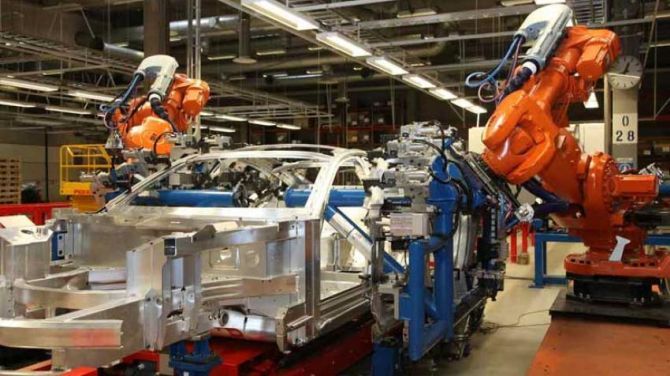The government clarified that the majority of industrial establishments had reported nil production, and cautioned that the numbers should not be compared with those of previous months.
'It is not appropriate to compare the IIP of April 2020 with that of earlier months, and users may like to observe the changes in the IIP in the following months,' said the ministry of statistics & programme implementation.

India’s industrial production contracted 55.5 per cent in April, the sharpest ever, as the Covid-19-induced lockdown almost froze economic activities. The Index of Industrial Production (IIP) had shrunk 18.3 per cent in March.
With an unprecedented lockdown in force for most of April, the government on Friday released only index numbers for industrial production, and the numbers cited above are derived from them.
The government clarified that the majority of industrial establishments had reported nil production, and cautioned that the numbers should not be compared with those of previous months.
“It is not appropriate to compare the IIP of April 2020 with that of earlier months, and users may like to observe the changes in the IIP in the following months,” said the ministry of statistics & programme implementation.
But experts challenged this view. “It is important to understand how the lockdown has affected different parts of the economy. Therefore, we have analysed the year-on-year contraction levels across different sectors in April 2020, to inform our analysis and forecasts of how the economic activity is expected to recover in the coming months,” said Aditi Nayar, principal economist at ICRA.
Experts said the worst might be over as industrial activity had begun across sectors from May onwards, despite the lack of labour, logistics, and raw materials.
“The available lead indicators point to a modest recovery in May 2020 in some of the sectors that were acutely affected by the lockdown, such as rail freight, GST e-way bills, and fuel and electricity consumption,” said Nayar.
Manufacturing, which accounts for 78 per cent of the IIP, ground to a halt in April as output shrank 64.2 per cent. Experts, however, noted that during March, which had only seven days of lockdown, manufacturing output had fallen by 22.4 per cent. This signifies the existing stress in the sector, they said.
All the 23 sub-sectors within manufacturing posted year-on-year contraction, the same as the previous month. An analysis by CARE Ratings showed that 12 industries, including vehicles, furniture, leather, tobacco, electrical equipment, and fabricated metals recorded contraction of more than 90 per cent during the month. As many as 19 industries of the 23 recorded contraction of more than 50 per cent.
Madan Sabnavis, chief economist at CARE Ratings, expected contraction in industrial production to continue, albeit at a marginally less rate.
“Also with the lockdown carrying on in a modified form in June, the Q1FY21 performance will be negative in the range of 30 per cent," he said.
The capital goods segment, which denotes investment in industry, contracted by more than 90 per cent. The rate of fall was significant compared to the 35.6 per cent plunge witnessed in March. Production in the category has remained in the red for the 15th straight month.
Policymakers fear that with the government exhausting most efforts to open up even more sectors to easier foreign direct investment flows, the fate of capital goods production may take time to recover.
Consumer demand gone
Consumer durables were the biggest casualty of the lockdown among user-based industries, recording a 33 per cent fall in production. Even before the latest Covid-19 crisis, data from the beginning of the year showed that production of consumer durables had continued to drop, with March being the latest in a 10-month contraction spree.
Consumer durables production fell by more than 95 per cent with the deferral of non-essential consumption. Even consumer non-durables, which include several essential items, witnessed 36.1 per cent contraction in April after March's 16.2 per cent fall.
Mining activity also caved by 27.3 per cent, after remaining relatively unscathed in March. On the other hand, electricity generation managed to stem the decline at a modest 22 per cent as domestic demand shot up.
Generation had fallen by 8.2 per cent in March. Industrial output for fiscal 2019-20 had contracted 0.7 per cent, compared with a growth rate of 3.8 per cent in 2018-19, official data released last month had shown. Growth had been tapering off since end-2019, but a rebound in February had raised expectations.











